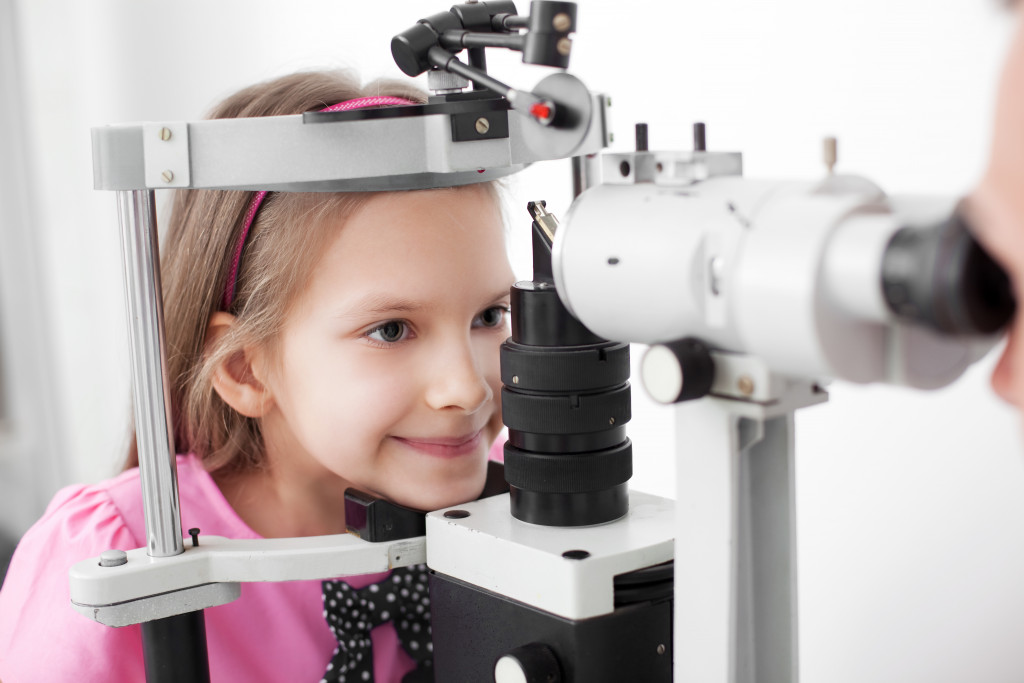Millions of people suffer from vision problems, but many don’t know it. In fact, according to the National Eye Institute, more than 22 million Americans have some form of vision impairment. And that number is only going to grow as the population ages. Many common eye problems can be treated easily and effectively if caught early. In this article, we’ll look at some of the most common eye problems and how to treat them.
Keratoconus
Keratoconus is a degenerative eye condition that gradually thinners and weakens the cornea, the clear outer layer of the eye. This ultimately leads to a cone-shaped bulge in the center of the cornea, which interferes with vision. In the early stages of keratoconus, vision can be corrected with glasses or contact lenses. However, as the condition progresses, these treatments become less effective. Corneal transplants are often necessary in advanced cases of keratoconus. However, there are new treatments available that can help slow or even stop the progression of this condition. Intacs is one such treatment. Intacs are small plastic inserts placed in the middle layer of the cornea. This helps to support the cornea and prevent further thinning and bulging. Cross-linking surgery for Keratoconus is another new treatment. This involves using ultraviolet light to strengthen the collagen fibers in the cornea. This helps to stabilize the cornea and prevent further deterioration. These new treatments offer hope for those affected by keratoconus, and they may help preserve vision in many cases.
Cataracts
Cataracts are a common condition that occurs when the eye lens becomes cloudy or opaque. They typically affect people over the age of 60 but can occur at any age. Cataracts can cause vision problems ranging from mild to severe and, if left untreated, can eventually lead to blindness.
There are two main types of cataract surgery:
Phacoemulsification involves using ultrasound waves to break up the cloudy lens so it can be removed.
Extracapsular surgery: This involves removing the cloudy lens through a small incision in the eye.
Glaucoma
Glaucoma is a condition that occurs when the pressure inside the eye becomes too high. It can damage the optic nerve and lead to vision loss or blindness. Glaucoma typically affects people over the age of 40 but can occur at any age.
There are two main types:
Open-angle glaucoma: Open-angle is the most common type. It occurs when the drainage angle of the eye becomes blocked.
Angle-closure glaucoma: This is a less common type of glaucoma. It occurs when the iris (the colored part of the eye) blocks the eye’s drainage angle.
The most common treatment for glaucoma is medications, which can help lower the pressure inside the eye. Surgery may also be needed in some cases.
Amblyopia
Amblyopia, also known as “lazy eye,” is a common vision problem when the nerve pathway from the eye to the brain is not fully developed. Amblyopia typically affects only one eye and can occur in children and adults. Although amblyopia can be caused by several factors, the most common cause is an imbalance in the eyes, where one eye is stronger than the other. If left untreated, amblyopia can lead to permanent vision loss in the affected eye. The good news is that amblyopia is treatable, and with early diagnosis and treatment, most people with amblyopia retain normal vision in their affected eyes.

Treatment for amblyopia typically involves using an eye patch or drops to blur the vision in the strong eye, forcing the weak eye to work harder and develop normal vision. In some cases, surgery may also be necessary to correct the underlying cause of amblyopia. With proper treatment, most people with amblyopia regain normal vision in their affected eyes.
Age-related macular degeneration
Age-related macular degeneration (AMD) is a condition that affects the macula, which is the part of the eye responsible for central vision. It typically affects people over 50 and can cause vision loss or blindness.
There are two main types of AMD:
Dry AMD: This is the most common type of AMD. It occurs when the macula becomes thin and dry.
Wet AMD: This is a less common type of AMD, but it’s more likely to cause vision loss. The growing of abnormal blood vessels under the macula is when this condition occurs.
There is no cure for AMD, but there are treatments that can help slow the progression of the disease.
Diabetic retinopathy
Diabetic retinopathy is a condition that occurs when diabetes damages the blood vessels in the retina (the back part of the eye). It typically affects people with diabetes but can occur in anyone with high blood sugar levels. Diabetic retinopathy can cause vision loss or blindness.
There are two main types of diabetic retinopathy:
Non-proliferative diabetic retinopathy: This is the most common type of diabetic retinopathy. It occurs when the blood vessels in the retina become blocked or damaged.
Proliferative diabetic retinopathy is a less common type of diabetic retinopathy, but it’s more likely to cause vision loss. New blood vessels grow in the retina and leak fluid or bleed.
The most common treatment for diabetic retinopathy is laser surgery. This can help slow the progression of the disease and prevent vision loss.
These are some of the most common eye problems. If you are experiencing any vision problems, see an eye doctor for a proper diagnosis and treatment.





